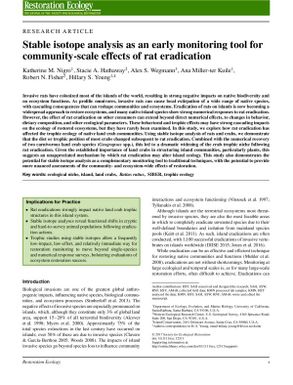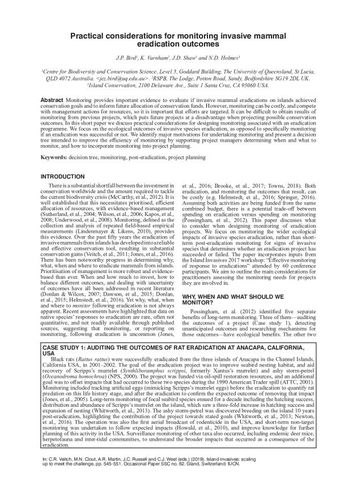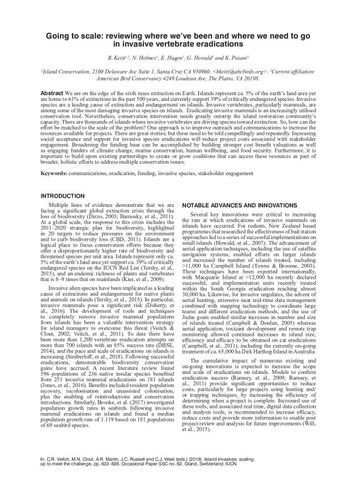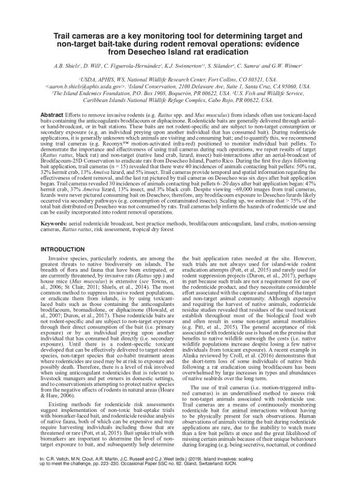Stable isotope analysis as an early monitoring tool for Community-scale effects of rat eradication
- Description:
- Invasive rats have colonized most of the islands of the world, resulting in strong negative impacts on native biodiversity and on ecosystem functions. As prolific omnivores, invasive rats can cause local extirpation of a wide range of native species, with cascading consequences that can reshape communities and ecosystems. Eradication of rats on islands is now becoming a widespread approach to restore ecosystems, and many native island species showstrong numerical responses to rat eradication. However, the effect of rat eradication on other consumers can extend beyond direct numerical effects, to changes in behavior, dietary composition, and other ecological parameters. These behavioral and trophic effectsmay have strong cascading impacts on the ecology of restored ecosystems, but they have rarely been examined. In this study, we explore how rat eradication has affected the trophic ecology of native land crab communities. Using stable isotope analysis of rats and crabs, we demonstrate that the diet or trophic position of most crabs changed subsequent to rat eradication. Combined with the numerical recovery of two carnivorous land crab species (Geograpsus spp.), this led to a dramatic widening of the crab trophic niche following rat eradication. Given the established importance of land crabs in structuring island communities, particularly plants, this suggests an unappreciated mechanism by which rat eradication may alter island ecology. This study also demonstrates the potential for stable isotope analysis as a complementary monitoring tool to traditional techniques, with the potential to provide more nuanced assessments of the community- and ecosystem-wide effects of restoration.
- Display date:
- 2017
- Collections:
- Secretariat of the Pacific Regional Environment Programme (SPREP)
- Publisher:
- University of California
- Content partner:
- Secretariat of the Pacific Regional Environment Programme (SPREP)
- Availability:
- Not specified
-
Copyright status: All rights reservedFind out more about what you are able to do with this itemThis item is all rights reserved, with means you'll have to get permission from Secretariat of the Pacific Regional Environment Programme (SPREP) before using it. For more information, please see our use and reuse page.What can I do with this item?Non-infringing useNZ copyright law does not prevent every use of a copyright work, and this item may be hosted by an international institute or organisation. You should consider what you can and cannot do with a copyright work.No sharingYou may not copy and/or share this item with others without further permission. This includes posting it on your blog, using it in a presentation, or any other public use.No modifyingYou are not allowed to adapt or remix this item into any other works.No commercial useYou may not use this item commercially.
Related items
Welcome and warm Pasifik greetings
The information on this site has been gathered from our content partners.
The names, terms, and labels that we present on the site may contain images or voices of deceased persons and may also reflect the bias, norms, and perspective of the period of time in which they were created. We accept that these may not be appropriate today.
If you have any concerns or questions about an item, please contact us.



